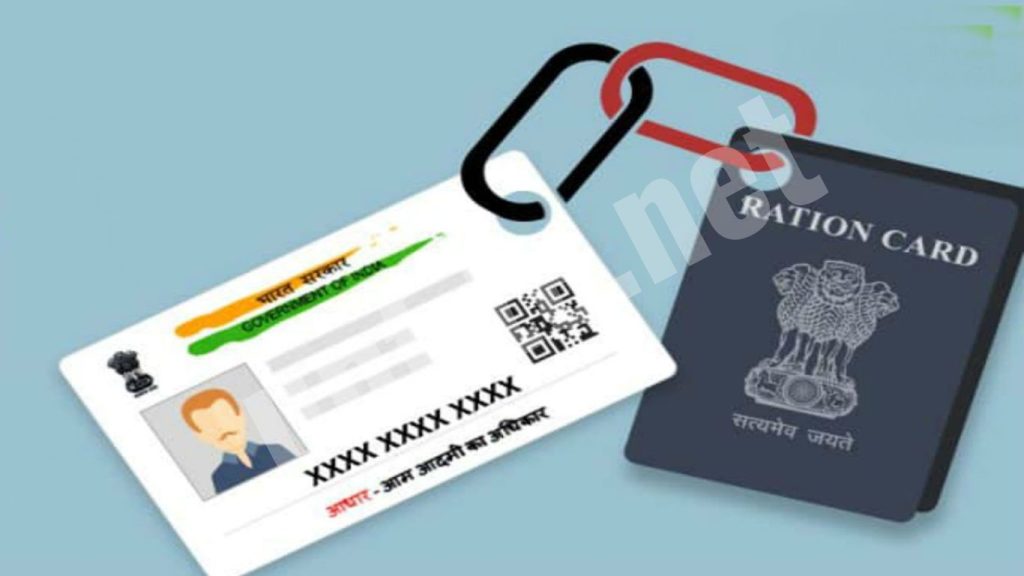How to Obtain a Ration Card at Home Easily

The National Food Security Act (NFSA) enables you to access subsidized food grains through the Public Distribution System (PDS) with a state-issued ration card. Additionally, a ration card is crucial for various identification purposes, including applying for a birth certificate, voter ID card, and residence certificate.
If you haven’t yet applied for a ration card, this detailed guide will walk you through the process. It includes information about the One Nation One Ration Card program and a complete list of required documents. In this article, we’ll explain how to make a ration card at home and cover all the essential details to ensure a smooth application process.
What Are The Advantages Of A Ration Card?
A ration card not only enables you to buy affordable food grains from ration shops but also serves multiple identification purposes. You can use it to open a bank account, pay income tax, and apply for a voter ID card. Additionally, it helps you obtain a SIM card for your phone, apply for a passport or driver’s license, and establish an LPG connection.
Documents Required for Ration Card
The documents needed to apply for a ration card can vary by state but typically include:
- Driving license
- Aadhaar card
- Employee ID
- Voter ID
- Passport
- Any government-issued ID
- Health care (including Aarogyasri card)
How To Make A Ration Card At Home?
To apply for a ration card, begin by visiting the website of your state’s Department of Food or the specific state ration card portal. Navigate to the “Food Security” section. If you don’t already have an account, create one, or log in with your existing credentials.
Select the “Apply for New Ration Card” option and choose the appropriate category based on your eligibility, such as PHH, AAY, or APL. Complete the application form with accurate details about your family and attach the necessary documents.
After reviewing your application, submit it and make a note of the reference number for tracking purposes. You can check the status of your application on the website under the “Track Application Status” section or inquire at the Taluka office where you submitted your form.

How to Check E Ration Card List Online
To check if your name is included in the new E Ration Card list:
- Go to the official Food Department website.
- Click on the “E-Ration Card List” option on the homepage.
- Select your state, district, block, and tehsil from the available options.
- Look for your name in the list that appears.
How to transfer a Ration Card
If you move to a different city and need to transfer your ration card to a new state, you must apply to the nearest ration office in your new location. Provide a written request along with proof of your new address (as specified above) and pay the required application fee. The transfer process will then be initiated.
Similarly, if a woman marries and relocates to her husband’s residence, a new or updated ration card is issued. You need to apply to have her name removed from her parents’ ration card and added to her husband’s family card. For this, a marriage certificate must be submitted.
Understanding the Ration Card System
A ration card is an official document issued by the government that entitles the holder to purchase subsidized food grains and other essential commodities from designated ration shops or Public Distribution System (PDS) outlets. Its primary purpose is to ensure that eligible individuals and families receive essential food items at lower prices, thereby supporting their food security.
Benefits of Having a Ration Card
- Access to Subsidized Food: Ration cardholders can buy staple food items like rice, wheat, and sugar at reduced prices, making it easier to manage household budgets.
- Identification: It serves as a valid identification document for various purposes, including applying for a voter ID, passport, and bank account.
- Government Services: It facilitates access to other government services and welfare schemes, including subsidies for LPG cylinders and health benefits.
- Proof of Residency: The card can be used as proof of residence when applying for various documents or services.
Overview of the National Food Security Act (NFSA) and Its Role
The National Food Security Act (NFSA), enacted in 2013, aims to provide food security to the underprivileged by ensuring access to sufficient, affordable, and nutritious food. Under NFSA, the government guarantees subsidized food grains to eligible households through the Public Distribution System (PDS).
Key Roles of NFSA:
- Entitlement to Food Grains: NFSA mandates the provision of food grains at subsidized rates to eligible families, classified under different categories like Below Poverty Line (BPL) and Above Poverty Line (APL).
- Implementation of PDS: It outlines the operational framework for the PDS, which includes the distribution of food items and the management of ration shops.
- Coverage Expansion: NFSA aims to expand coverage to include more households and ensure that no eligible person is left out of the food security net.
- Monitoring and Accountability: The Act includes provisions for monitoring and ensuring the efficient distribution of food grains, with mechanisms to address grievances and disputes.
Eligibility Criteria
To obtain a ration card, applicants typically need to meet the following general eligibility requirements:
- Residency: The applicant must be a resident of the state or region where they are applying for the ration card.
- Income Criteria: Eligibility may be based on income levels, with different criteria applying to various categories of ration cards.
- Citizenship: The applicant must be an Indian citizen.
- Proof of Identity and Address: Applicants need to provide valid identity and address proofs, such as an Aadhaar card, voter ID, or utility bills.
- Family Composition: Details about all family members, including their identities and relationships, are usually required.
Categories of Ration Cards
Ration cards are categorized to target different segments of the population based on their economic status and needs:
Priority Household (PHH):
- Eligibility: Low-income households that need priority access to subsidized food grains.
- Benefits: Entitles holders to a specific quantity of subsidized food grains, including rice and wheat, at a lower cost compared to the general market price.
Antyodaya Anna Yojana (AAY):
- Eligibility: Extremely poor households are considered the most vulnerable.
- Benefits: Provides the highest subsidy levels under the NFSA, ensuring that these households receive essential food items at very low prices.
Above Poverty Line (APL):
- Eligibility: Households with income levels above the poverty line but below the threshold for higher economic status.
- Benefits: Offers subsidized food grains, though at a higher rate than PHH and AAY categories. This category is intended for those who need some assistance but are not classified as the poorest.
Special Circumstances

When significant life events, such as marriage, occur, it may be necessary to update your ration card to reflect changes in your household. This process involves making modifications to include or remove names as needed.
How to Remove or Add Names on the Ration Card
Removing a Name:
- Submit an Application: Write an application requesting the removal of a name from the ration card. This is commonly required when a family member moves out or is no longer part of the household.
- Provide Documentation: Attach relevant documents, such as proof of new address or a death certificate if applicable.
- Submit to Local Office: Submit the application and documents to the nearest ration office or the office where the ration card was issued.
Adding a Name:
- Submit an Application: Write an application to add a new member’s name to the ration card. This is often required for newly married individuals or new family members.
- Provide Documentation: Attach necessary documents such as a marriage certificate, birth certificate, or proof of relationship to the new member.
- Update Records: Visit the nearest ration office or use the online portal if available to submit the application and documents for updating the ration card.
Frequently Asked Question
What is a ration card and why do I need one?
A ration card is an official document that entitles holders to purchase subsidized food grains and other essential items from designated ration shops. It is also used as proof of identity and residence for various government services.
Who is eligible to apply for a ration card?
Eligibility varies by state but generally includes Indian citizens who are residents of the state. Income levels, family size, and other criteria may influence eligibility for different categories of ration cards.
What documents are required to apply for a ration card?
Commonly required documents include proof of identity (Aadhaar card, passport), proof of residence (utility bills, rental agreement), and proof of income if applicable. Specific requirements may vary by state.
How can I apply for a ration card online?
To apply online, visit your state’s Food Department website or the dedicated ration card portal. Create an account or log in, select the “Apply for New Ration Card” option, fill out the application form, upload the required documents, and submit.
What should I do if I need to transfer my ration card to a new state?
If you move to a new state, apply to the nearest ration office in your new location. Provide proof of your new address and pay any applicable fees for the transfer process.
How can I check the status of my ration card application?
You can track your application status on the same website where you applied. Look for the “Track Application Status” option or visit the Taluka office where you submitted your application for updates.
How do I update my ration card after marriage or significant life events?
To update your ration card, apply to add or remove names based on the change. Provide relevant documentation, such as a marriage certificate, and visit the nearest ration office or use the online portal for updates.
What should I do if my name is missing from the E-Ration Card list?
Check the official Food Department website for any updates if your name is not listed. Ensure all details are correct and, if necessary, contact the local ration office to resolve any discrepancies.
Conclusion
Obtaining a ration card from the comfort of your home is a straightforward process that ensures you can access essential benefits and services with minimal hassle. By following the steps outlined—such as understanding eligibility, gathering required documents, and applying online through the appropriate state portals—you can efficiently secure your ration card. This vital document not only provides access to subsidized food grains but also serves as a key piece of identification for various official purposes.
Remember to keep track of your application status and promptly update your ration card in case of significant life changes. By leveraging the available online resources and local offices, you can ensure a smooth and successful application process.



